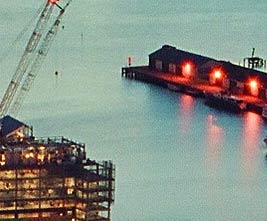

Minolta describe the VFC lens as “a sophisticated wideangle lens whose field of sharp focus can be curved to conform to various subjects.” It can be used as a conventional flat-field wide angle lens, and features the floating focusing design for incredible edge to edge sharpness at all distances and apertures. It is also one of the highly sought after Minolta “Big 3”, together with the 35mm f/2.8 Shift CA perspective correction lens, and the 85mm f/2.8 Varisoft variable soft focus lens.
The VFC (Variable Field Curvature) lens features a control ring that enables the plane of sharp focus to be adjusted from flat to convex, to concave according to requirements. Referring to the picture above, turning the VFC control ring to the left of the central diamond turns the field from flat to concave (bowl shaped). Turning it to the right of the diamond produced a convex (dome shaped) field. These curvatures can be used to obtain sharp rendition of three dimensional subjects (eg. the surface of a ball, people sitting around a table etc.) even when the depth of flat field is insufficient to do so. Curving the field in this way is particularly effective at relatively close focusing distances and large apertures.
Curvature extends from the focused distance at the centre of the frame to a point at the corners that is either nearer or farther from the film plane than the focused distance, depending on whether the VFC control-ring index is set respectively left or right of the flat field setting. The curvature grows continuously deeper as the ring is turned away from the central diamond.
The effect of the curvature can be seen visually through the viewfinder or estimated from the marks behind the aperture ring. For example, turning the control-ring to the right red mark while the lens was focused at 70cm would result in the field extending out to 4 metres at the corners. This would allow sharp rendering both a close centred subject and background subjects at the edges a considerable distance away, even at full aperture.

This photo was taken as a 15 second exposure , with a Cokin P123 graduated blue filter. The detail in the original scan is amazing.
Melbourne, looking West over the Docklands, May 2003.


